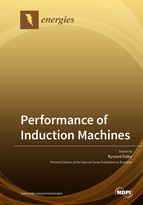Performance of Induction Machines
A special issue of Energies (ISSN 1996-1073). This special issue belongs to the section "F: Electrical Engineering".
Deadline for manuscript submissions: closed (20 January 2022) | Viewed by 35776
Special Issue Editor
Interests: electrical machines; numerical field calculations; optimization of electromagnetic fields; HTS machines and bearings
Special Issues, Collections and Topics in MDPI journals
Special Issue Information
Dear Colleagues,
As Guest Editor, I am inviting you to submit papers to a Special Issue of Energies on the subject of “Performance of Induction Machines”.
Induction machines are one of the most important technical applications for both the industrial world and private use. Since they were invented (the works of Galileo Ferraris, Nikola Tesla, and Michal Doliwo-Dobrowolski) until today, they have been widely used thanks to such features as reliability, durability, low price, high efficiency, and resistance to failure. Induction machines are used in different electrical drives and as generators. The “strongest player” in the automotive sector, which is the Tesla concern, used only induction motors in its designs.
The main objective of this Special Issue on “Performance of Induction Machines” aims to contribute to the development of induction machines in all areas of applications. We encourage scientists and engineers to present the results of their recent research in the field of design and application of induction machines.
We are pleased to accept original research as well as review articles.
Topics of interest for publication include but are not limited to:
- Simulation tools, modeling, and analysis of induction machines;
- Induction motors and generators;
- Design methods of induction machines;
- Optimization of induction machines;
- Linear induction motors for transportation systems;
- Power electronics used for supply and control of induction machines;
- New technologies, materials, devices, and systems for induction machines.
Submit your paper and select the Journal “Energies” and the Special Issue “Performance of Induction Machines” via: MDPI submission system. Please contact the special issue editor ([email protected]) for any queries. Our papers will be published on a rolling basis and we will be pleased to receive your submission once you have finished it.
Prof. Dr. Ryszard Palka
Guest Editor
Manuscript Submission Information
Manuscripts should be submitted online at www.mdpi.com by registering and logging in to this website. Once you are registered, click here to go to the submission form. Manuscripts can be submitted until the deadline. All submissions that pass pre-check are peer-reviewed. Accepted papers will be published continuously in the journal (as soon as accepted) and will be listed together on the special issue website. Research articles, review articles as well as short communications are invited. For planned papers, a title and short abstract (about 100 words) can be sent to the Editorial Office for announcement on this website.
Submitted manuscripts should not have been published previously, nor be under consideration for publication elsewhere (except conference proceedings papers). All manuscripts are thoroughly refereed through a single-blind peer-review process. A guide for authors and other relevant information for submission of manuscripts is available on the Instructions for Authors page. Energies is an international peer-reviewed open access semimonthly journal published by MDPI.
Please visit the Instructions for Authors page before submitting a manuscript. The Article Processing Charge (APC) for publication in this open access journal is 2600 CHF (Swiss Francs). Submitted papers should be well formatted and use good English. Authors may use MDPI's English editing service prior to publication or during author revisions.
Keywords
- Induction machines
- Induction generators
- Control of induction machines
- Linear induction motors






